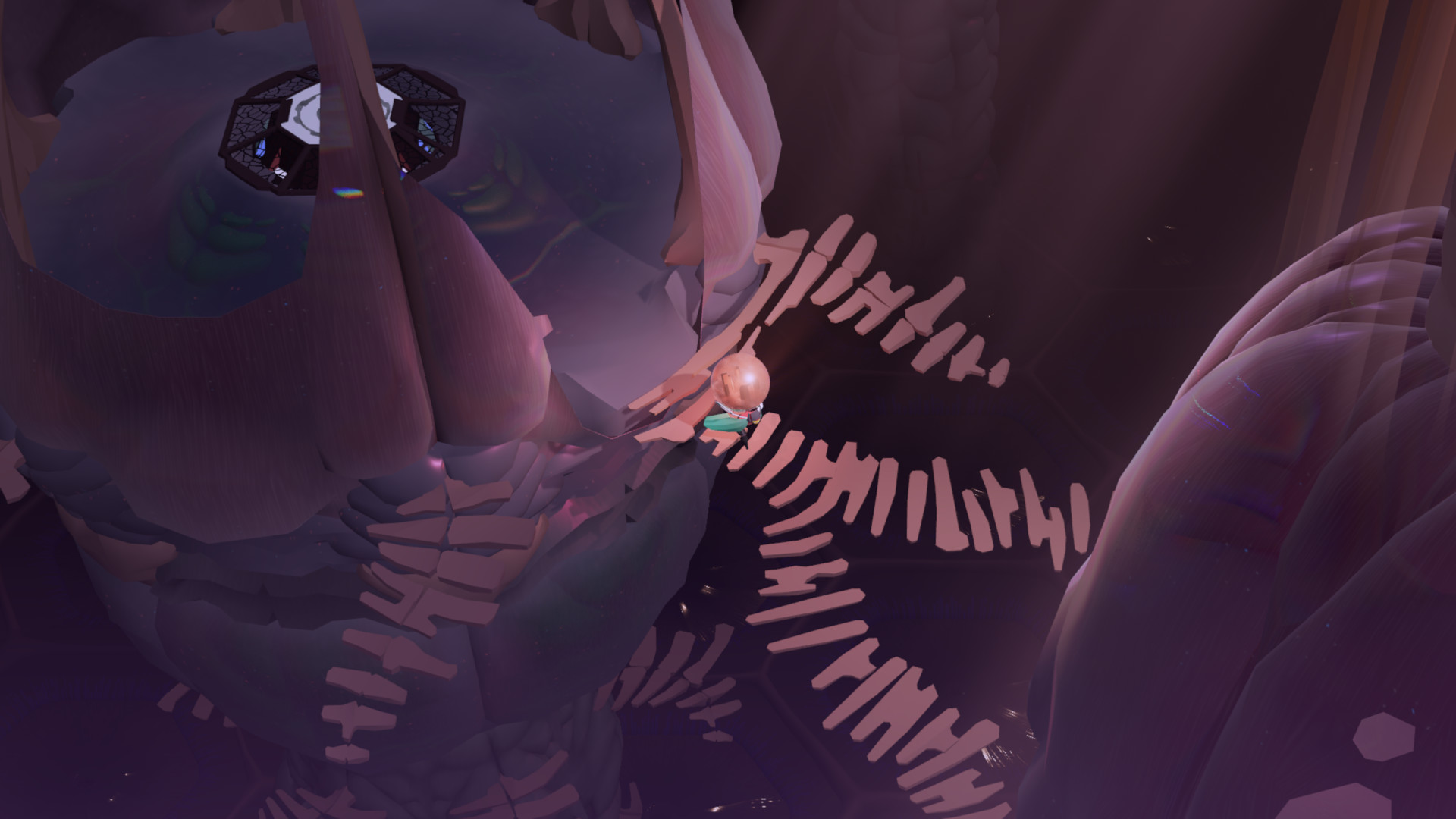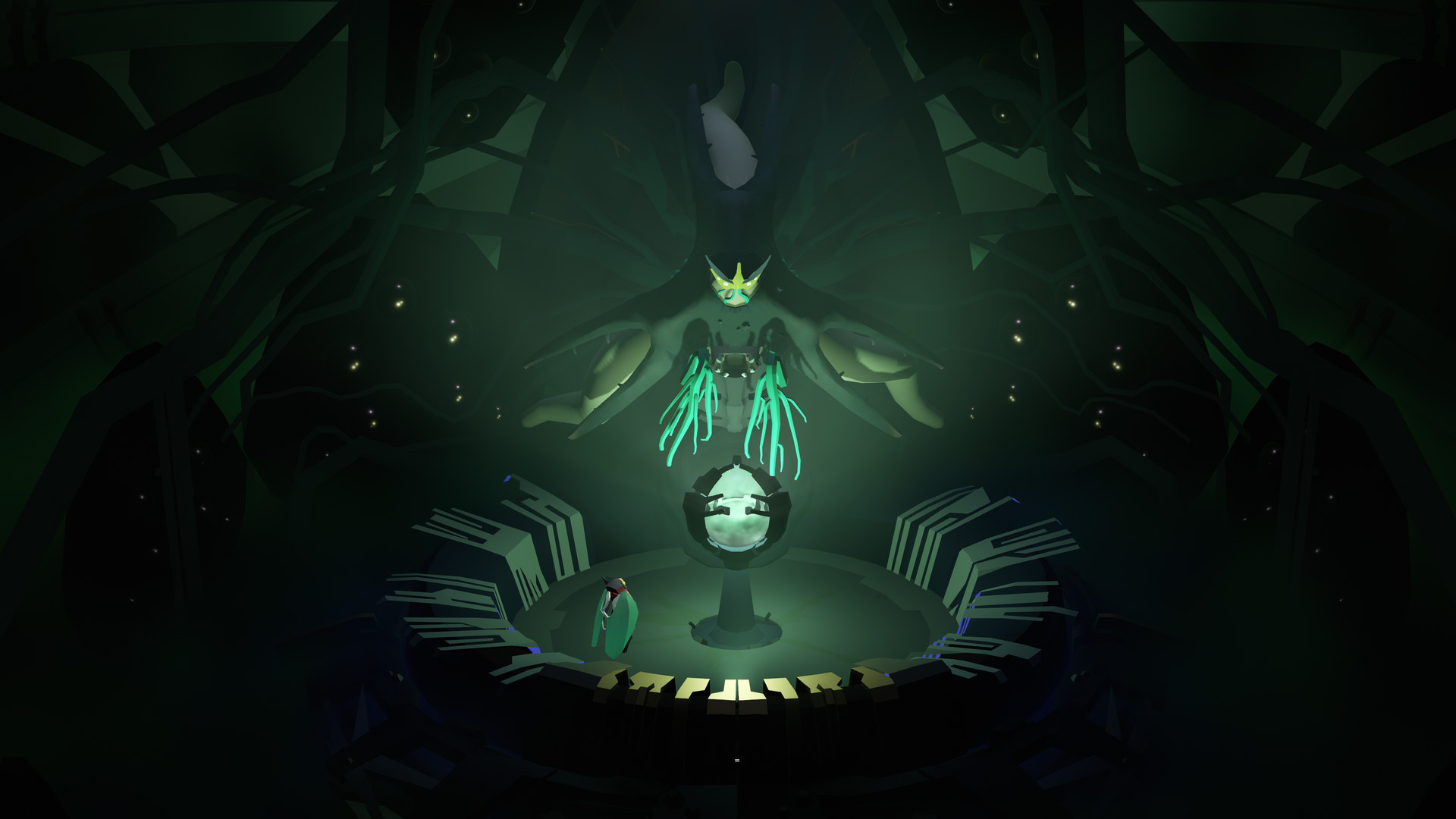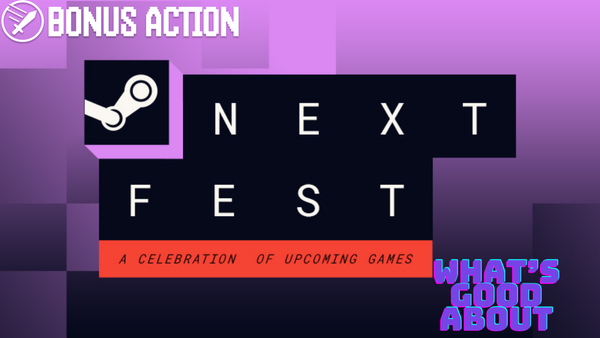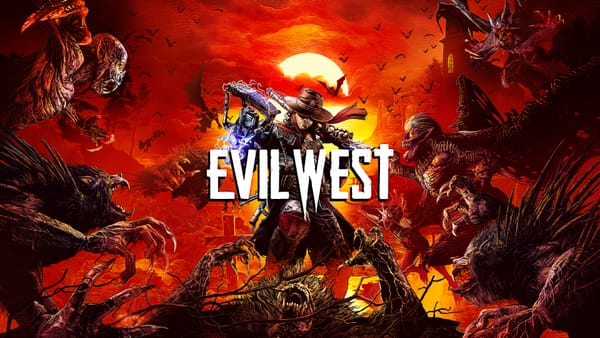What's Good About Cocoon

Here, have a listen.
This will be another one of those “going outside of my wheelhouse” posts. I don’t normally talk about puzzle games not named Tetris or Portal for one simple reason: they make me feel like a massive dipshit. Nine times out of ten, either the answer is right in front of me and I don’t notice or my lack of perception keeps me from noticing the answer until I give up out of frustration. I‘m the guy who always has a guide on him when he plays through a Zelda game. I bring all of this up because I played through a short, but sweet puzzle game by the name of Cocoon that came out in Game Pass two weeks ago. It’s kind of been stuck in my head since I finished it, much in the same way that Portal was when I first played that god knows how many years ago. So let me tell you what’s good about Cocoon.
Cocoon was developed by Geometric Interactive, a studio founded by former Playdead employees Jeppe Carlsen and Jakob Schmid. This is important to note because the former was the lead gameplay designer of Limbo and Inside. While I never got around to playing Inside, I played a good chunk of Limbo when it first came out back in the day and thought it was a clever little puzzle game when it was scaring the pants off me. Cocoon goes for a decidedly different bent to its style. Trading in LIMBO and Inside’s monochromatic colour schemes for bright vibrant colours, and trading in their horror-themed trappings for a science fiction bent. But like those games, Cocoon tells its story completely non-verbally. Choosing instead to let the various environments and mechanics do all of the heavy lifting.

Speaking of story, you play as a small robotic beetle that is collecting orbs that are different worlds and is using them to rearrange things in those worlds for an initially unseen purpose. While I won’t go into the specifics for spoiler reasons, I will say that I do like that the story plays out in a way that had me thinking about what it meant. I know that there’s an alternate ending and I might go back to it due to it being tied to a series of collectibles, so I’ll do that when I get the chance. But yeah, the use of Cocoon’s mechanics to tie into its story are some neat things that I can't get into because of spoilers. So I’ll just leave it there and move on to the gameplay.
As I mentioned earlier and in more cryptic terms to avoid story spoilers, Cocoon is a puzzle game that focuses on the manipulations of orbs and different worlds to move from one area to the next. This starts out simple enough with switch puzzles and using the orbs and their abilities to manipulate the environments to better suit you. But this changes as you get further and further into the game, with the environments foreshadowing the hints to the puzzle solutions in the backgrounds, stricter timings on specific puzzle transitions, and even introducing new wrinkles to the orbs themselves to ensure your brain is fully engaged with the puzzles. The main mechanic that I like about Cocoon is the orbs. The orbs serve as the basic function for how you interact with the world, from puzzles to power sources, to being bridges, opening up new pathways and more. There are four in total, each with their own unique abilities ranging from forming hard light bridges to changing the matter states of specifically marked blocks, teleportation, and shooting energy projectiles.

All of these mechanics are foreshadowed early on, but Cocoo slowly eases you into them as they’re introduced after each of the game’s boss fights, each with their own mechanics wholly separate from the rest of the game and are probably some of my favourite puzzles in Cocoon. The perfect Microcosm for this eventual layering of mechanics has to be when you have to start carrying each orb inside of each other, eventually creating scenarios where you go into multiple worlds and rearrange stuff and put them back in, like an inter dimensional matryoshka doll.
Cocoon is a great puzzle game that wordlessly shows you a series of escalating puzzles and worlds and trusts that you are clever enough to figure them out. I can safely add this to my list of puzzle games I finished without looking up a guide, which currently sits at just Portal and Portal 2. It’s also a really short one too, clocking in at around 6 hours. That makes it the perfect Game Pass game and for me, probably one of the most interesting games I’ve played this year. Check it out when you have the chance.





